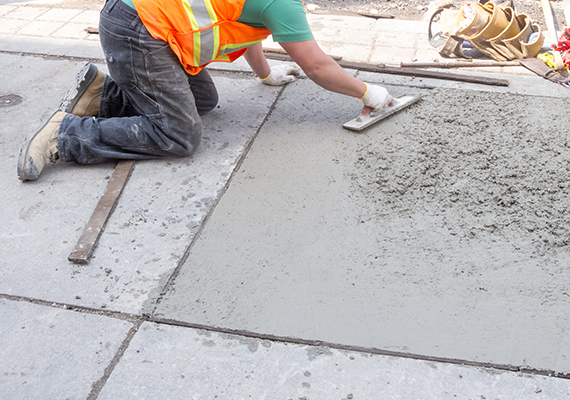Cracks in concrete are common but can lead to serious structural issues if ignored. Whether you’re dealing with hairline cracks, settlement cracks, or deep fractures, this guide provides step-by-step solutions to repair them effectively.
Why Do Concrete Cracks Happen?
What Causes Cracks in Concrete?
Concrete cracks due to:
- Shrinkage: As concrete dries, it shrinks, leading to small cracks.
- Settlement: Uneven ground movement causes stress fractures.
- Temperature Changes: Expansion and contraction weaken concrete over time.
- Overloading: Excessive weight (e.g., heavy vehicles) can cause structural cracks.
- Poor Mix or Curing: Weak concrete mix or improper curing increases cracking risk.
Expanded Answer:
Concrete is a rigid material, meaning it cannot flex under stress. When internal or external forces act on it (like ground movement or temperature shifts), cracks form. Hairline cracks (less than 1/8 inch) are usually harmless, but wider cracks (over ¼ inch) may indicate foundation problems.
How Do You Know If a Crack Is Serious?
When Should You Worry About Concrete Cracks?
A crack is serious if:
Width exceeds ¼ inch
Depth goes through the entire slab
Crack is growing over time
Accompanied by bulging or sinking concrete
Expanded Answer:
Structural cracks (often diagonal or stair-step shaped) suggest foundation issues. Non-structural cracks (thin, surface-level) are usually cosmetic. If water seepage, mold, or uneven floors accompany cracks, consult a professional immediately.
What’s the Best Way to Fix Small Concrete Cracks?
How Do You Repair Hairline Cracks in Concrete?
For cracks less than ⅛ inch wide:
- Clean the crack (wire brush + vacuum).
- Apply concrete caulk or epoxy filler.
- Smooth with a putty knife and let cure.
Expanded Answer:
Hairline cracks don’t threaten stability but can worsen if water enters. Self-leveling sealants work best for floors, while epoxy injections are ideal for vertical surfaces. For outdoor cracks, use UV-resistant polyurethane caulk.
How Do You Fix Large or Deep Concrete Cracks?
What’s the Best Method for Repairing Wide Cracks?
For cracks wider than ¼ inch:
- Chisel out loose debris (create a V-shape for better adhesion).
- Use a bonding adhesive before filling.
- Fill with mortar mix or pourable crack filler.
- Smooth and let cure for 24+ hours.
Expanded Answer:
Deep cracks require reinforced patching compounds or hydraulic cement (for active leaks). If the crack is structural, carbon fiber strips or steel rebar may be needed for reinforcement.
Can You Fix Cracks in Concrete Without Professional Help?
When Can You DIY vs. Call a Pro?
DIY if:
✔ Crack is non-structural & small
✔ No signs of foundation movement
✔ You have basic repair tools
Call a pro if:
Crack is wider than ½ inch
Slab is sinking or shifting
Water leakage persists
Expanded Answer:
A concrete repair contractor uses advanced methods like epoxy injections, slab jacking, or underpinning for severe cases. DIY fixes may fail if the root cause (like soil erosion) isn’t addressed.
How Can You Prevent Future Cracks?
What Are the Best Ways to Stop Concrete from Cracking?
- Proper curing: Keep concrete moist for 7 days.
- Control joints: Cut strategic gaps to guide cracking.
- Reinforcement: Use rebar or wire mesh in slabs.
- Seal regularly: Apply concrete sealer every 2-3 years.
Expanded Answer:
Prevention starts before pouring concrete:
- Compact soil to prevent settling.
- Use fiber-reinforced concrete for durability.
- Avoid de-icing salts (they accelerate cracking).
What’s the Cost of Fixing Concrete Cracks?
How Much Does Concrete Crack Repair Cost?
- DIY repair: $10–$50 (caulk, epoxy, patching compound).
- Professional repair: $250–$800+ (epoxy injections, slab leveling).
Expanded Answer:
Costs vary by crack size, location, and method. Hairline cracks are cheap to fix, while foundation cracks may require $1,000–$3,000+ for professional remediation.

